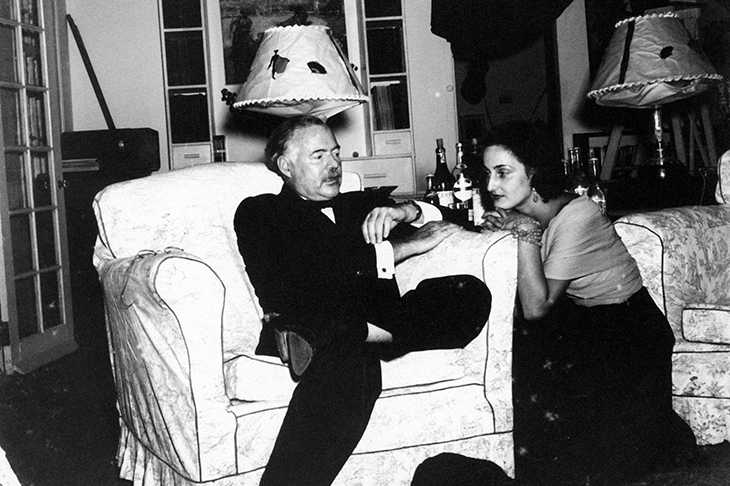One rainy evening in December 1948, a blue Buick emerged from the darkness of the Venetian lagoon near the village of Latisana and picked up an Italian girl — 18, jet black wet hair, slender legs — who had been waiting for hours at the crossroads. In the car, on his way to a duck shoot, was Ernest Hemingway — round puffy face, protruding stomach and, at 49, without having published a novel in a decade, somewhat past his sell-by. He apologised for being late, and offered the rain-sodden girl a shot of whisky which, being teetotal, she refused.
So did Papa, that ‘beat-up, old-looking bastard’, encounter the siren he called ‘my last and true love’: Adriana Ivancich, a mingling of Lolita and Tadzio, who appeared to him ‘as fresh as a young pine tree in the snow of the mountains’ and who went on to serve as Hemingway’s regenerative muse for his remaining 12 years. ‘It was just something that struck me like lightning.’
Of books on Hemingway there is no end. The author of this one has some skin in the game. His great-uncle was a drinking buddy of Hemingway in Venice, and his aunt was the dedicatee of Hemingway’s story ‘The Faithful Bull’. Plus, growing up near Adriana in southern Tuscany, Andrea di Robilant later met her, by then more than partial to whisky, subdued, with a melancholy gaze, and ‘struggling with depression’ — like not a few who entered Hemingway’s destructive orbit. He may have liberated English prose from mandarins such as Henry James and Edith Wharton, but he sure as heck manacled the hearts of those he tried to love. ‘Women frightened him,’ his third wife Martha Gellhorn used to tell me, by the by declaring that he was also ‘insane’ and a rotten lover. ‘He wasn’t talented for intimacy.







Comments
Join the debate for just £1 a month
Be part of the conversation with other Spectator readers by getting your first three months for £3.
UNLOCK ACCESS Just £1 a monthAlready a subscriber? Log in